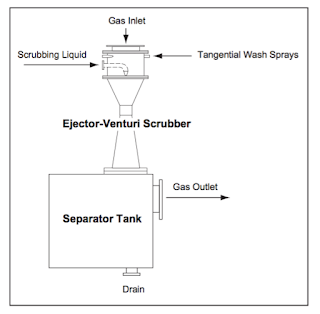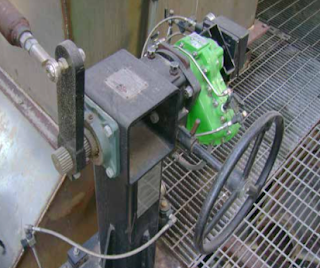 |
Thermocouple & RTDs come in many shapes,
styles, and configurations. |
This blog post will introduce the reader to the two most common industrial temperature sensors - the
thermocouple and RTD (resistance temperature detector).
A thermocouple is a temperature sensor that produces a micro-voltage from a phenomena called the
Seebeck Effect. In simple terms, when the junction of two different (dissimilar) metals varies in temperature from a second junction (called the reference junction), a voltage is produced. When the reference junction temperature is known and maintained, the voltage produced by the sensing junction can be measured and directly applied to the change in the sensing junctions' temperature.
 |
| Diagram of Type K thermocouple circuit |
Thermocouples are widely used for industrial and commercial temperate control because they are inexpensive, sufficiently accurate for many uses, have a nearly linear temperature-to-signal output curve, come in many “types” (different metal alloys) for many different temperature ranges, and are easily interchangeable. They require no external power to work and can be used in continuous temperature measurement applications from -185 Deg. Celsius (Type T) up to 1700 Deg. Celsius (Type B).
As a general rule, industrial thermocouples can be made to withstand higher temperatures and come in a wider variety of thermocouple types. MgO thermocouples are flexible and have wider selection of measurement junction configurations. An MgO thermocouple consists of a thermocouple element encased in a metal sheath and hard-packed with magnesium oxide mineral insulation. Thermocouple sheaths are fully annealed and can be formed into different configurations (minimum bend radius is twice the outer diameter of the sheath). The measuring junction can also be sealed from the environment, reducing the potential for contamination issues.
A typical industrial thermocouple is constructed using an element inserted into a process/environment specific protection tube. In certain configurations, it may be possible to replace the element without removing the protection tube from the process. There are endless combinations of elements and tubes, and are also available separately as replacement parts.
 |
Standard industrial temperature sensor configuration
(either thermocouple or RTD) |
Common application for thermocouples are industrial processes, the plastics industry, kilns, boilers, steel making, power generation, gas turbine exhaust and diesel engines, They also have many consumer uses such as temperature sensors in thermostats and flame sensors, and for consumer cooking and heating equipment.
RTD’s (resistance temperature detectors), are temperature sensors that measure a change in
resistance as the temperature of the RTD element changes. They are normally designed as a fine wire coiled around a bobbin (made of glass or ceramic), and inserted into a protective sheath. The can also be manufactured as a thin-film element with the pure metal deposited on a ceramic base much like a circuit on a circuit board.
 |
Coil wound RTD element
(image courtesy of Wikipedia) |
The RTD wire is usually a pure metal such as platinum, nickel or copper because these metals have a predictable change in resistance as the temperature changes. RTD’s offer considerably higher accuracy and repeatability than thermocouples and can be used up to 600 Deg. Celsius. They are most often used in biomedical applications, semiconductor processing and industrial applications where accuracy is important. Because they are made of pure metals, they tend to more costly than thermocouples. RTD’s do need to be supplied an excitation voltage from the control circuitry as well.
RTDs are resistive devices, so lead wire resistance directly affects its accuracy. The error can be quite large, depending on the lead wire resistance (measured in ohms / foot).For example, an uncompensated 2-wire circuit using 30 gauge wires can have an error as high as 1.2°F per foot!Fortunately, there is a method to compensate for the lead wire resistance.
2-wire - One lead wire is connected to each end of the element. This arrangement is suitable for uses where the lead wire resistance may be considered as a constant in the circuit, or where changes in the lead wire resistance due to ambient temperature changes can be ignored.
3-wire - This is the most common of RTD configurations. One lead wire is connected to one end of the element and two lead wires are connected to the other end.The purpose of the third lead is to compensate for the lead wire resistance, thereby increasing accuracy.An instrument capable of utilizing a 3- wire RTD must be used to benefit from this configuration.
4-wire - The most accurate of the RTD configurations, this element uses two wires for each end of the element. Building on the 3-wire concept, compensation is made for the resistance in each lead wire, creating a highly-accurate temperature-measurement device for critical applications.An instrument capable of utilizing a 4-wire RTD must be used to benefit from this configuration.
For more information on temperature sensors, contact:
Power Specialties, Inc.
www.powerspecialties.com
9118 E. 72nd Terrace
Raytown, MO 64133
Toll Free: (800) 432-6550
Phone: (816) 353-6550
Fax: (816) 353-1740








